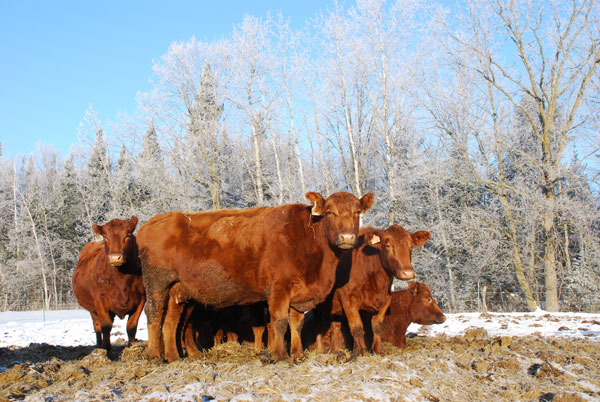Parameters for meeting cow herd protein and energy requirements vary, but all are important.
January 6, 2020

Along with the colder temperatures, snow, and other challenges that winter brings with its arrival, beef producers also face the task of determining how to utilize their forage resources best. “Supplementation of forages is a risk management tool for cattle producers trying to manage the risk of reproductive performance,” says Tryon Wickersham, animal nutritionist at Texas A&M University.
Recently, during a webinar sponsored by NCBA, Wickersham addressed five areas important to understanding supplementation decisions when faced with low-quality winter forages and explained the importance of gathering relevant information about your cows and your forages.
1. Why supplement?
“Supplementation is focused around sustaining or increasing body weight or body condition score (BCS) of the animal,” says Wickersham, “and this is most effectively done by enhancing the utilization of the forage resource available or replacing the forage resource.”
He notes if cows come into the winter season with a lower-body condition score, producers will want to add weight to allow the cow the best preparation for going into winter and preparing for spring calving.
2. Determine cost/revenue ratio
It’s easy to want to offer supplementation for your cow herd, but doing so means added cost. “You can spend a lot of money to improve reproductive performance if that is a focus you want, but you need to calculate on a per cow basis, what the cost of supplementation is to achieve your goals,” says Wickersham.
Producers should determine how much they can afford to spend to get the outcomes they are seeking or what would be the loss of revenue if they did not supplement.
3. Seasonality of energy requirements
Matching the animal’s energy requirements to the timing of supplementation is a target to aim for, explains Wickersham. “A good measuring stick to remember is, energy requirements are highest during calving and early lactation, they fall off during the mid-lactation period and then begin to rise again after the cow is bred and moves into their first trimester.”
Energy requirements increase before calving when the goal is to maintain BCS and often when forage quality is decreasing. Supplementation at this time can help to maintain BCS.
Immediately after calving is often another time when supplementation may be considered. Energy needs of the animal are higher than forage resources allow during this period. Thus, supplementation provides the opportunity to balance out the gap in energy needs and resources. “However, if management prior to calving did not focus on maintaining BCS, doing so at this time is not as cost-effective.”
4. Identify forage quality
“When supplementing protein, we want to try and be as close to the requirements as possible, and the way to do that is to conduct a forage test and look at how much you anticipate your cows will eat and require.”
Wickersham explains if you go above the requirements you are spending money on protein that is not going to positively impact your returns. Forage testing will identify the quality parameters of crude protein and total digestible nutrients (TDN) in the forage resource producers are aiming to incorporate into the ration. When crude protein levels increase, intake levels off.
“A rule of thumb is, when crude protein levels are 7% or higher in forages, supplementation will not be as effective.” TDN levels, which are an indicator of energy content, are difficult and more expensive to measure. Thus, he encourages producers to check with their local or state Extension service or grazing associations, as these organizations may have historical data on TDN levels for your geographical area. “If you are meeting a cow’s TDN requirements, you are usually meeting the cow’s protein requirements.”
5. Calculate forage quantity
Track how much forage is available and how much the cows are willing to consume. For example, if you are feeding round bales of hay, counting and keeping track of how many bales you put out per cow will help in tracking consumption levels.
“The more they eat, the more TDN they will get in their body and the more crude protein they will get.” With low-quality forages that are synonymous with winter, focusing on supplementation of protein “will allow for utilization of the forage resources available, give the greatest intake available, and overall result in the greatest intake of forage utilization.”
B. Lynn Gordon is a freelance writer from Brookings, S.D.
You May Also Like



